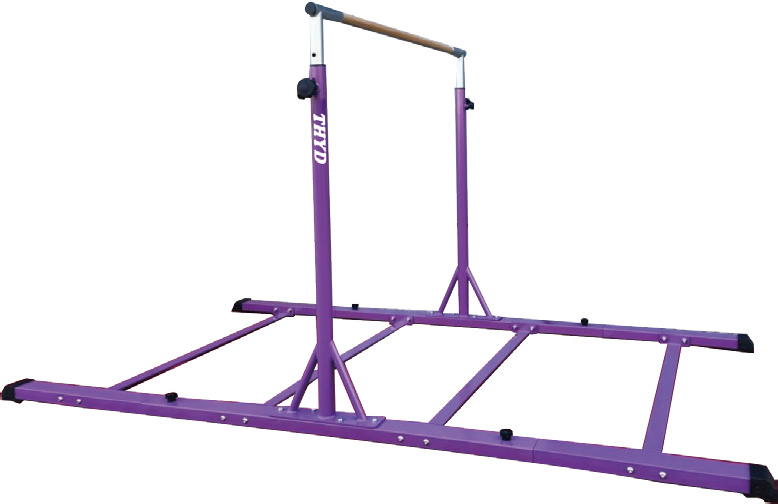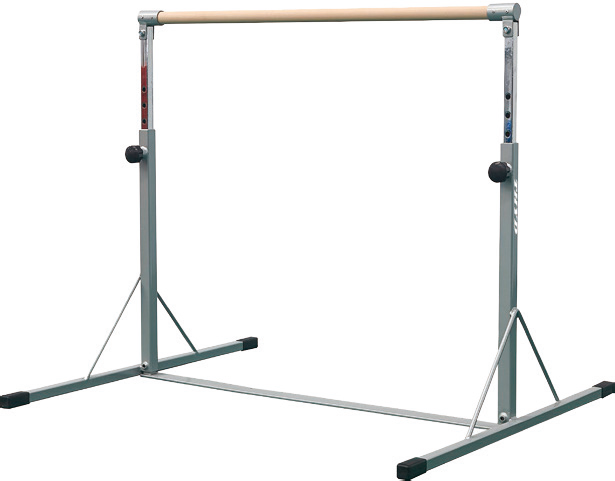Gymnastics High Bar for Sale: Comparing Options and Making a Decision
When searching for a gymnastics high bar for sale, the array of options can feel overwhelming. From budget-friendly home models to elite competition-grade setups, each gymnastics high bar is designed for specific needs—whether you’re outfitting a home gym for a young beginner or equipping a training facility for competitive athletes. Comparing these options requires balancing factors like price, durability, adjustability, and safety, all while ensuring the gymnastics high bar aligns with the user’s skill level and intended use. Let’s break down how to compare available options and make a confident decision.
Categorize by Use Case: Home, Gym, or Competition
The first step in comparing a gymnastics high bar for sale is defining where and how it will be used. Different environments demand different features, and matching the bar to its setting ensures optimal performance and safety.
Home Use Gymnastics High Bar
Home models prioritize portability, space efficiency, and affordability, making them ideal for families or individual gymnasts practicing basic skills. Key traits include:
- Compact size: A narrower base (often 80–100 cm wide) to fit in basements or garages.
- Lightweight design: Most weigh 20–50 kg, allowing for easy relocation.
- Adjustable height: Typically ranges from 150–220 cm, accommodating growing children.
- Moderate weight capacity: 80–100 kg, sufficient for beginners performing swings, kips, or pullovers.
Examples include the "Junior Flex" series, which features a foldable frame for storage and basic padding for safety. These models usually cost 500, balancing quality with budget constraints.
Gym or Training Facility Gymnastics High Bar
Facilities catering to multiple users (from beginners to advanced gymnasts) need durable, versatile high bars. These models offer:
- Heavy-duty construction: Thick steel frames (3+ mm tubing) and wide bases (120+ cm) for stability during intense routines.
- High weight capacity: 120–150 kg, supporting advanced skills like releases and dismounts.
- Advanced adjustability: Hydraulic or pin-lock systems with height ranges up to 275 cm, suitable for elite training.
- Safety features: Full padding on frames, rust-resistant finishes, and easy-to-replace grip tape.
The "ProTrainer 500" is a popular choice, priced at 800–1,500, with ASTM certification and a swivel mechanism for smooth rotations.
Competition-Grade Gymnastics High Bar
Designed for official events, these high bars meet strict FIG standards, ensuring consistency and safety for elite athletes. Features include:
- FIG certification: Compliance with exact dimensions (bar diameter 2.8 cm, height 275 cm) and stability requirements.
- Precision swivel bearings: Allow frictionless rotation for complex skills like the "Gienger" or "Kolman" releases.
- Anchored bases: Permanently bolted to the floor to eliminate wobble during high-force movements.
- Premium materials: High-tensile chrome-plated steel and corrosion-resistant components for longevity.
Models like the "EliteComp 3000" cost 5,000, used in national and international competitions.

Compare Key Features Across Models
When evaluating a gymnastics high bar for sale, comparing core features helps identify which option best fits your needs. Focus on these critical elements:
Stability and Wobble Resistance
- Home models: Look for a base weight of at least 30 kg and rubber feet to prevent sliding on smooth floors. Avoid models that rock when gently pushed.
- Gym/training models: Check for reinforced welds and crossbars between vertical supports, which reduce flex during swings.
- Competition models: Ensure the base is anchored with high-strength bolts and the frame uses tension cables to absorb shock.
A stable gymnastics high bar is non-negotiable—wobble during use increases injury risk and hinders skill development.
Adjustability and Versatility
- Height range: Beginners need lower settings (150–180 cm), while advanced users require 240–275 cm. Models with more height increments (e.g., 5 cm intervals) offer finer control.
- Folding capability: Useful for home gyms with limited space. Folding high bars should lock securely in both open and closed positions—test for looseness before buying.
- Swivel mechanism: Advanced gymnasts need a smooth-rotating bar. Compare bearing quality: ball bearings offer better rotation than bushings, though they cost more.
Safety Features
- Padding: Home models should have at least 1-inch foam padding on vertical supports. Gym models may include full-coverage padding with vinyl covers for easy cleaning.
- Grip compatibility: All high bars should accept standard grip tape (2.5–3 cm width). Some come pre-taped, but replaceable tape is a must for long-term use.
- Sharp edge protection: Bolts, brackets, and frame joints should be rounded or covered to prevent cuts.
Evaluate Brand Reputation and Reviews
A gymnastics high bar’s brand says a lot about its quality and reliability. Established brands invest in testing and customer support, reducing the risk of purchasing a subpar product.
Trusted Brands
- Z Athletic: Known for affordable home and training high bars, balancing quality and cost. Their "Pro Series" includes adjustable models with solid user reviews.
- AAI (American Athletic, Inc.): A leader in competition-grade equipment, compliant with FIG and ASTM standards. Used in U.S. Olympic training centers.
- Gymnova: A European brand, popular for durable gym and competition high bars, often found in professional facilities.
- Junior Gym: Specializes in beginner-friendly home models, with features like easy height adjustment and colorful padding for kids.
User Reviews and Ratings
- Home use: Look for reviews mentioning "stability for kids" and "easy assembly." Red flags include complaints about wobbly frames or broken adjustment pins.
- Gym/training use: Prioritize feedback from coaches or gym owners, focusing on "durability with daily use" and "smooth rotation."
- Competition use: Professional reviews from gymnastics federations or certified coaches carry the most weight, as they assess compliance with strict standards.
Avoid a gymnastics high bar for sale with consistent negative reviews about safety or durability, even if it’s priced low.
Budget Considerations: Balancing Cost and Quality
Gymnastics high bars vary widely in price, from 5,000+. Setting a budget and understanding what you get at each price point helps avoid overspending or buying insufficient equipment.
Budget (200–500)
- Best for: Beginners, kids, or occasional home use.
- What to expect: Basic adjustability, moderate stability, and minimal padding. These high bars work for swings and simple skills but may lack durability for daily use.
Mid-Range (500–2,000)
- Best for: Serious home gymnasts, schools, or small training facilities.
- What to expect: Heavy-gauge steel frames, smooth swivel mechanisms, and ASTM compliance. These models support advanced skills like releases and dismounts.
Premium ($2,000+)
- Best for: Competition venues, elite training centers, or professional gyms.
- What to expect: FIG certification, precision engineering, and lifetime warranties. These high bars meet Olympic-level standards for performance and safety.
While it’s tempting to opt for the cheapest gymnastics high bar for sale, investing in a mid-range model often pays off—they last longer and support skill progression as the user advances.
FAQ: Gymnastics High Bar for Sale
What’s the best gymnastics high bar for a 10-year-old beginner?
A compact, adjustable home model like the Z Athletic "Junior" (150–200 cm height, 30 kg base weight) works well. It’s affordable, stable enough for basic swings, and includes safety padding. Avoid heavy, competition-grade bars—they’re unnecessary for beginners.
Can a home gymnastics high bar support advanced skills like back handsprings?
Most home models (under 800+) with a 120+ kg weight capacity and reinforced frame.
How do I know if a gymnastics high bar is certified for competition?
Look for FIG or ASTM F3113 certification, listed in the product description or seller documentation. Certified bars include a label or sticker with the certification logo—ask the seller to provide proof if it’s not visible.
Is it better to buy a new or used gymnastics high bar?
New is safer for home use, as used bars may have hidden wear (e.g., weak welds, worn bearings). If buying used (common for gyms), inspect welds, test stability, and verify the model’s age—avoid bars over 5 years old, as steel fatigue increases with time.
What maintenance costs should I expect for a gymnastics high bar?
Annual costs include replacement grip tape (20–50),lubricantfortheswivel (10–20), and occasional bolt replacements (100–200/year) to maintain certification.
Table of Contents
- Gymnastics High Bar for Sale: Comparing Options and Making a Decision
- Categorize by Use Case: Home, Gym, or Competition
- Compare Key Features Across Models
- Evaluate Brand Reputation and Reviews
- Budget Considerations: Balancing Cost and Quality
-
FAQ: Gymnastics High Bar for Sale
- What’s the best gymnastics high bar for a 10-year-old beginner?
- Can a home gymnastics high bar support advanced skills like back handsprings?
- How do I know if a gymnastics high bar is certified for competition?
- Is it better to buy a new or used gymnastics high bar?
- What maintenance costs should I expect for a gymnastics high bar?


